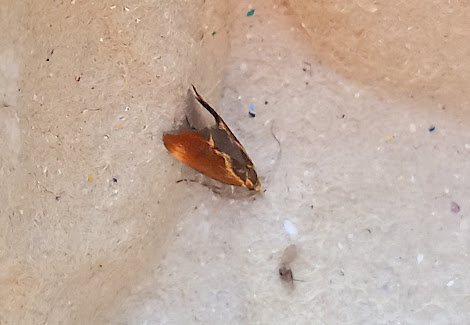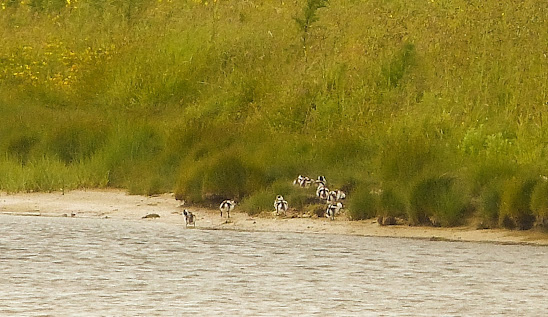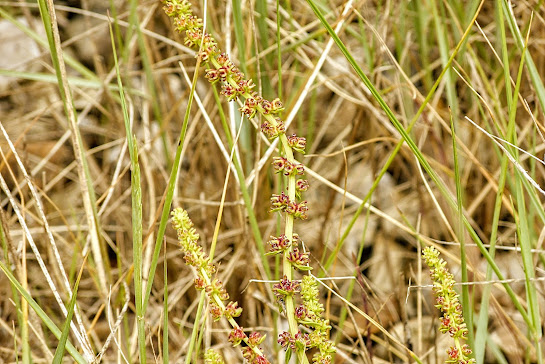Saturday 16th June 2024.
‘Lazee’s’ birding in West Sussex for the day? Surely unthinkable! But when there was simply nothing to go for to add to our Hampshire year list and a Wood Sandpiper was in nearby West Sussex, residing for most of the week on Sidlesham Ferry Pool; we simply had to go. The weather most certainly played its part today with heavy rain coming in early this morning, but again, the day was going to be starting with the Moths. I was going to get one unexpected ‘year-tick’ today, which was all I needed to grab my 200th bird species in the UK for the year, but not a species I was expecting at the start of the day.
The Moth Boxes:
Sadly, I did not beat the House Sparrows this morning as at least four birds flew off from around my Moth Box around 5.15am when I entered the garden. After last nights strong winds and rain, moth numbers were very low this morning, with just 7 moths of 7 species; though it did include my second Buff-tip in my Moth Box this year and another newbie for the year, the attractive ‘micro’ moth, Italian Bark Moth (Metalampra italica). This species was first recorded in the UK only as far back as 2003 and was not seen out of Italy till then. Now they are seen in several south coast localities. I get them virtually annually in my moth box.
The few moths present in my garden today included the following:
- Buff-tip
- Uncertain
- Dark Spectacle
- Vine’s Rustic
- White Ermine
- Italian Bark Moth (NEW FOR YEAR)
- Ruddy Streak
Though dry and sunny when I was checking my Moth Box, when I made my way to Geoff’s house in Drayton, the sky darkened and the rain came in. So much for light rain predicted on one of my weather Apps on my phone as it bucketed down when I arrived at Geoff’s. Checking Andy’s Moth Box was no different with yet another low number of moths present that included the following:
- Heart & Dart
- Early Grey (deceased)
- Large Yellow Underwing
- Common Marbled Carpet
By now, the rain was still falling and after breaking the news to Andy that we were going to West Sussex, he accepted the decision and off we went to the Ferry Pool in West Sussex! A strong blustery south-westerly was blowing hard all the way there and little did we know, there was a good movement of Manx Shearwaters going past Selsey Bill at the time along with several Arctic Skua’s. I found out later that a close Manx Shearwater was seen flying very close this morning off Hill Head; seen and photographed by fellow ‘Lazee’ Mark Francis (see photo below).
Sidlesham Ferry Pool, West Sussex.
On arrival at the car park at the Pagham Harbour Centre, the rain was lashing down and so we took a drive into Selsey to grab some brunch, of which Andy kindly paid for mine. Good man! We made our way back to the Car Park and though it was still spitting with rain, we made our way to the excellent Hide overlooking the Ferry Pool. Despite spending a good hour here, there was no sign of the Wood Sandpiper. The damn bird had been here most of the week including up to yesterday evening and now it had flown! Bloody typical! In its wake, we found at least three Little Ringed Plovers, 14 Avocets (including at least four juveniles), a dozen or so Redshank and several Shelduck, including one parent bird with 12 fluffy youngsters. Good numbers of Pied Wagtails were on the edge of the Pool and a lone Common Buzzard was seen flying north over the area with prey in its talons. During that hour, the sunshine had finally arrived.
On the way back to the car, we took a quick look at the big Pond, which held our first Blue-tailed Damselfly of the year. A few Pond Skaters were flitting about on the water and I was sure I had a Newt species popping up to the surface to grab some air then swim down to the bottom again. A tiny 22-spotted Ladybird was found on the plants by the Pond, shining bright yellow with its black spots. Within the Information Centre, we found a TV monitor focusing on a nearby nest box where several young Kestrels were inside. Apparently, the Volunteer present told us that one of the adults had eaten one of the young and fed it to the rest! We saw this on Springwatch recently and so I was not too surprised. After a good look at their merchandise on sale (they wanted a packet of biscuits for £5 for Christ’s sake!).
Selsey Bill, West Sussex.
It was bright sunshine when we pulled into the ‘pothole fest’ car park at the bottom of Grafton Road. However, it was so windy here that the only shelter we had was by the seawall at the edge of the large garden. We spent the next hour here and with the scope, I picked up my first Kittiwake of the year flying fast westbound. Sadly, it was a scope view only and as the guys had no scope therefore only myself saw the bird, which, incidentally turned out to be my 200th species of the year! Yay! Other notable sightings included two Gannets, an adult and juvenile, a couple of Common Terns and at least 5 Sandwich Terns. I suppose if we had more time, we just might have picked up a Manx Shearwater, but all the best action happened earlier today it seemed.
Church Norton, West Sussex
To be honest, where we stood at Selsey Bill was not comfortable and the light was getting worse with the sun reflecting off the sea. What next? Church Norton was our next destination and rom here, we had lunch and from the seats overlooking the harbour. Our final hour was spent here, enjoying a selection of Terns and waders on show at low tide. I think the American Golden Plover had long gone, but it still didn't hurt to check now and then. Scanning the harbour thoroughly, the waders seen included several Oystercatchers, about 8 Ringed Plovers and a smart summer plumage Dunlin were seen along with a single Curlew. At least 4 Sandwich and 4 Common Terns were resting near the concrete blocks and a Little Tern briefly joined them, though mostly fishing in the small channel nearby. Behind us, both Green Woodpecker and Chiffchaff were heard as Geoff went on to check the local plant life here by the benches that included Sea Purslane, Sea Beet and Sea Plantain. Even nymph Lesser Marsh Grasshoppers were hopping about our feet when we checked out the plants, which all added to the superb nature of this superb reserve.























No comments:
Post a Comment